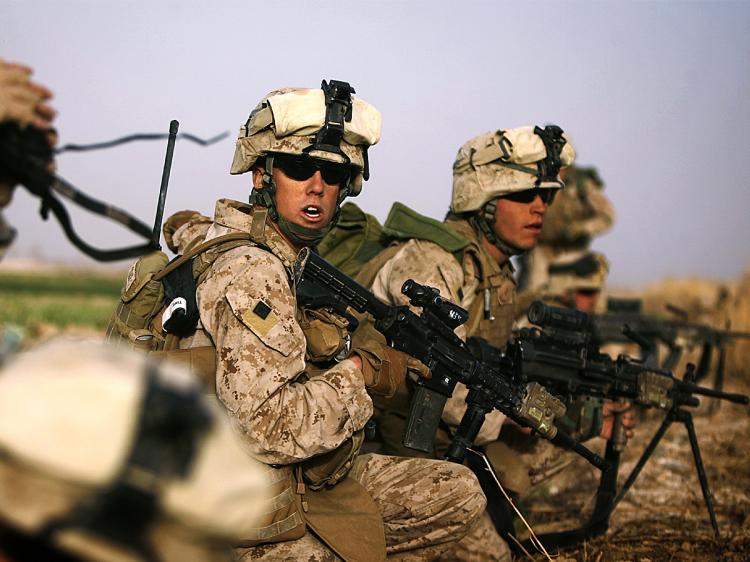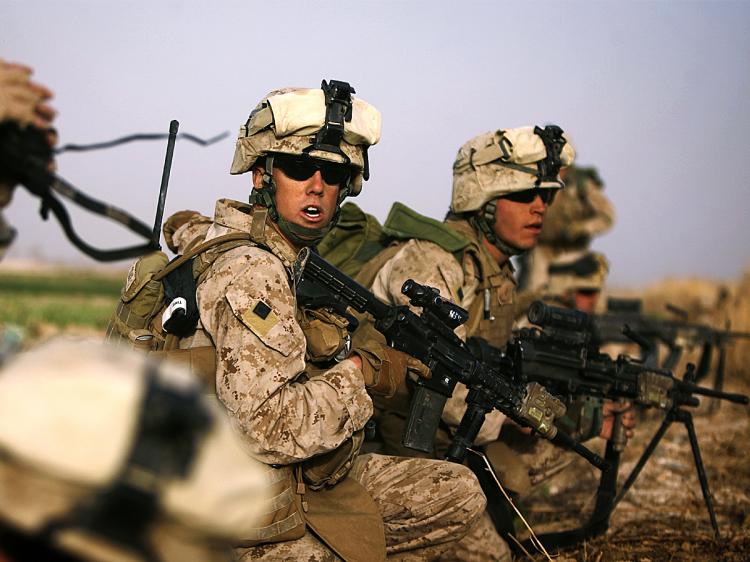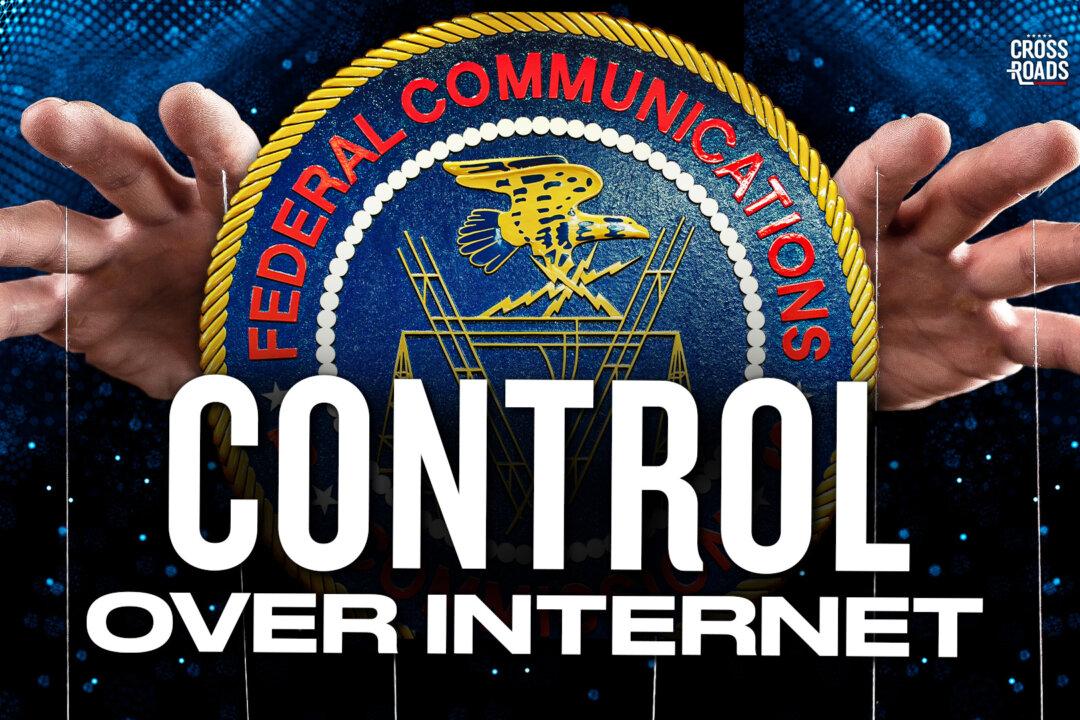Hit and run shootings and improvised explosive devices (IED) comprise most of the remaining threats in the city of Marjah, the largest Taliban stronghold in Afghanistan’s Helmand Province, as Operation Moshtarak “together” moves forward.
By Feb. 16, all but the southern portion of the city was under control by U.S. and International Security Assistance Force (ISAF) forces, and “three successful ‘shuras’ (meetings) were held with influential community members, and other meetings with Helmand residents also took place,” according to an ISAF press release.
“The size and scope of this operation has not yet been seen in the history of the war in Afghanistan,” said White House Press Secretary Robert Gibbs on Feb. 16.
U.S. Marines took the city in the early morning on Feb. 13, and Afghan and U.K. troops moved in later in the day. Sporadic fire fights continued on Feb. 15, two days after the offensive began, according to an ISAF press release. By Sunday, the Afghan flag flew over the city.
Involved in the offensive are American, U.K., and Afghan troops, including newly-trained operatives of the Afghan National Police and Afghan national army. They bring with them a fully staffed “government in a box,” complete with its own police force that will take control of the city once the Taliban have been chased out.
The force of 15,000 was met with less resistance than expected. It is believed that most of the Taliban fighters fled prior to the offensive, when plans of the attack were announced. It was announced that three U.S. and U.K. troops were killed in the offensive. An estimated 20 militants were killed and 11 others were taken prisoner.
The purpose of the offensive is to bring the city under the control of the Afghan government and to establish its authority in the Taliban haven of Helmand province, near the Pakistan border.
At least 15 civilians have been killed in the offensive.
Several Taliban fighters were firing at troops without effect as they fled the city. The Taliban spokesman said concern over “civilian casualties” are the reason for their withdrawal, yet vowed to continue their “hit and run tactics,” according to geopolitical intelligence company Stratfor.
The U.S. and Afghan government are continuing outreach efforts to Taliban fighters, offering them jobs if they lay down their weapons.
“If they want to fight, then obviously that will have to be an outcome. But if they don’t want to fight, that’s fine too,” Gen. Stanley McChrystal told the American Forces Press Service. “We’re not interested in how many Taliban we kill. We'd much rather have them see the inevitability that things are changing and just accept that.”
The U.S. is taking a political approach to the war in Afghanistan. “The current U.S. strategy in Afghanistan is to use military force, as the United States did in Iraq, to reshape the political landscape,” according Stratfor. “Everyone from President Barack Obama to Gen. Stanley McChrystal has made it clear that the United States has no interest in making the investment of American treasure necessary to carry out a decade-long (or longer) counterinsurgency and nation-building campaign.”
Part of the current campaign is to chase Taliban and al-Qaeda fighters out of key zones and to win over the support of the civilian populations for the Afghan national government.
According to Stratfor, a “military force is being applied in order to break cycles of violence, rebalance the security dynamic in key areas, shift perceptions, and carve out space in which a political accommodation can take place.”
The Obama administration will soon send an additional 30,000 troops to the region, bringing the number to nearly 100,000—which includes the near 40,000 ISAF personnel.
Effort is currently being placed into training the Afghan army, which will take lead of the fight against the Taliban once the U.S. and ISAF forces withdraw. In December the country had just over 100,000 troops, which is expected to rise to more than 171,000 by October 2011.
The Afghan police were also just less than 100,000 strong in December, yet are expected to increase to 134,000 by October 2011, according to the American Forces Press Service.
By Feb. 16, all but the southern portion of the city was under control by U.S. and International Security Assistance Force (ISAF) forces, and “three successful ‘shuras’ (meetings) were held with influential community members, and other meetings with Helmand residents also took place,” according to an ISAF press release.
“The size and scope of this operation has not yet been seen in the history of the war in Afghanistan,” said White House Press Secretary Robert Gibbs on Feb. 16.
U.S. Marines took the city in the early morning on Feb. 13, and Afghan and U.K. troops moved in later in the day. Sporadic fire fights continued on Feb. 15, two days after the offensive began, according to an ISAF press release. By Sunday, the Afghan flag flew over the city.
Involved in the offensive are American, U.K., and Afghan troops, including newly-trained operatives of the Afghan National Police and Afghan national army. They bring with them a fully staffed “government in a box,” complete with its own police force that will take control of the city once the Taliban have been chased out.
The force of 15,000 was met with less resistance than expected. It is believed that most of the Taliban fighters fled prior to the offensive, when plans of the attack were announced. It was announced that three U.S. and U.K. troops were killed in the offensive. An estimated 20 militants were killed and 11 others were taken prisoner.
The purpose of the offensive is to bring the city under the control of the Afghan government and to establish its authority in the Taliban haven of Helmand province, near the Pakistan border.
Civilian Casualties
At least 15 civilians have been killed in the offensive.
Several Taliban fighters were firing at troops without effect as they fled the city. The Taliban spokesman said concern over “civilian casualties” are the reason for their withdrawal, yet vowed to continue their “hit and run tactics,” according to geopolitical intelligence company Stratfor.
The U.S. and Afghan government are continuing outreach efforts to Taliban fighters, offering them jobs if they lay down their weapons.
“If they want to fight, then obviously that will have to be an outcome. But if they don’t want to fight, that’s fine too,” Gen. Stanley McChrystal told the American Forces Press Service. “We’re not interested in how many Taliban we kill. We'd much rather have them see the inevitability that things are changing and just accept that.”
The U.S. is taking a political approach to the war in Afghanistan. “The current U.S. strategy in Afghanistan is to use military force, as the United States did in Iraq, to reshape the political landscape,” according Stratfor. “Everyone from President Barack Obama to Gen. Stanley McChrystal has made it clear that the United States has no interest in making the investment of American treasure necessary to carry out a decade-long (or longer) counterinsurgency and nation-building campaign.”
Part of the current campaign is to chase Taliban and al-Qaeda fighters out of key zones and to win over the support of the civilian populations for the Afghan national government.
According to Stratfor, a “military force is being applied in order to break cycles of violence, rebalance the security dynamic in key areas, shift perceptions, and carve out space in which a political accommodation can take place.”
The Obama administration will soon send an additional 30,000 troops to the region, bringing the number to nearly 100,000—which includes the near 40,000 ISAF personnel.
Effort is currently being placed into training the Afghan army, which will take lead of the fight against the Taliban once the U.S. and ISAF forces withdraw. In December the country had just over 100,000 troops, which is expected to rise to more than 171,000 by October 2011.
The Afghan police were also just less than 100,000 strong in December, yet are expected to increase to 134,000 by October 2011, according to the American Forces Press Service.



![[LIVE Q&A 05/03 at 10:30AM ET] Some States Looking to Drop Electoral College for Popular Vote](/_next/image?url=https%3A%2F%2Fimg.theepochtimes.com%2Fassets%2Fuploads%2F2024%2F05%2F02%2Fid5642609-CR-TN_REC_0503-1080x720.jpg&w=1200&q=75)

![[PREMIERING MAY 9, 8:30PM ET] Weapons of Mass Migration | NEW Documentary](/_next/image?url=https%3A%2F%2Fimg.theepochtimes.com%2Fassets%2Fuploads%2F2024%2F04%2F30%2Fid5640415-1920x1080-no-epochtv-1080x720.jpg&w=1200&q=75)
